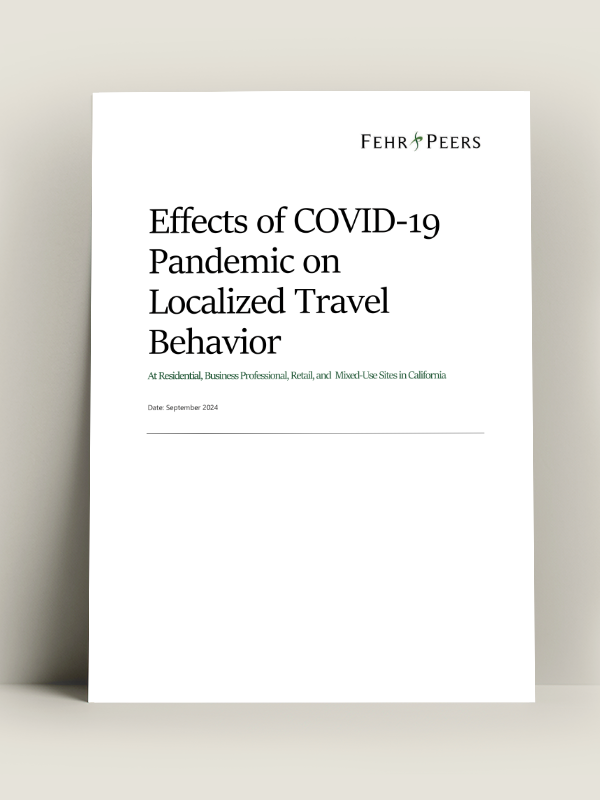Understanding Post-Pandemic Travel
Since the onset of the COVID-19 pandemic, one question we frequently hear from our clients is: How has local travel behavior changed? To help provide answers, we embarked on a self-funded research effort, collecting pre-COVID and 2022/2023 traffic data at residential, retail, and mixed-use sites across California. We also conducted multi-day surveys at large office parks, one of the land uses most affected by the pandemic.
Our findings reveal significant shifts in travel patterns, especially at office buildings, where trip generation rates have dropped well below the rates set by ITE’s 2021 Trip Generation Manual, which consists entirely of pre-COVID data. These insights could have important implications for transportation planning, from travel demand models to infrastructure forecasting and fee programs.
For a deeper look at the data and what it means for future planning, check out our full white paper. Questions? Feel free to reach out to the report’s primary author, John Gard, PE, RSP1.
Contributors
John Gard
Email Me
Brian Wolfe
Email Me
Explore More
Taking to the Skies
With Urban Air Mobility (UAM) and Advanced Aerial Mobility (AAM) building momentum, explore what implementing eVTOL vehicles and vertiports into our transportation systems could look like.
Francisco Martin Rejoins Fehr & Peers
We are pleased to announce that Francisco Martin has rejoined Fehr & Peers as Principal in our Stockton office. Francisco played a pivotal role in establishing our Oakland office 13 years ago and brings a wealth of experience in project management and infrastructure planning to our team.
Understanding Traveler Behavior Pt. 2
Examine how traveler behavior with a focus on price elasticity can provide further insight on effective transportation strategies.






